What do employees really want?
COVID-19 has turned our world upside down. Organizations which never thought remote work could be possible now realize employees are happier and more productive with flexibility, trust, and empowerment. Some organizations have adopted the RTO (return to office) policy, others have fully embraced remote work, while the rest have adopted a hybrid model (a few days a week in the office, a few days remote).
Exiting from the pandemic-forced lockdown allowed many organizations to press the reset button. They have become more employee-centric to really understand what employees want, what drives them, and what motivates them.
Purpose
Employees now look for win-win work relationships and for organizations to care about them as human beings, not just workers. They want work experiences that are purposeful, fulfilling, aligned with their values, and their pursuit of both personal and professional goals.

Employees who feel a strong sense of purpose when working are more:
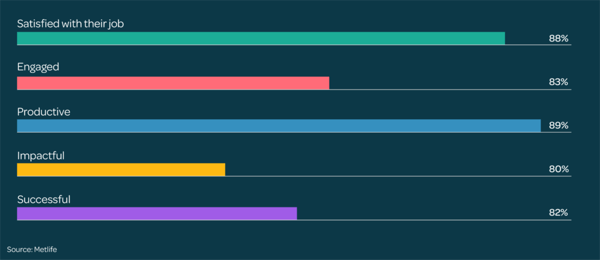
Employees who feel a sense of purpose feel less stress and fatigue:
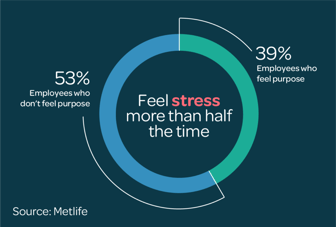
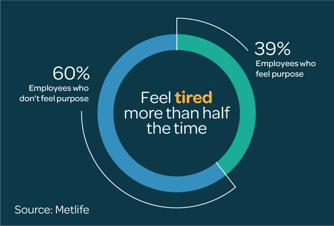
Reciprocity
Employees are asking for a sense of reciprocity. Reciprocity is where employers expect employees to bring their best selves to work; and employees expect their employer to support them bringing their best selves to work.
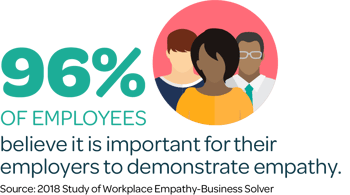

Overall Well-being
As the lines between personal and professional lives are blurred, there is a need for an expanded and holistic approach to augment traditional employee support, which includes supporting employees physically, emotionally, spiritually, and mentally – at work AND outside of work.
Employees are attracted to employers who can help them fulfill these needs and manage this challenging work-life integration. They expect organizations to provide a 'wholistic' approach to support their lives at and outside of work, beyond a paycheck and traditional benefits.


The Five Dimensions of Employee Well-being
There are Five Dimensions of Employee Well-being including: Financial Health, Mental Health, Physical Health, Social Health, and Community Health.
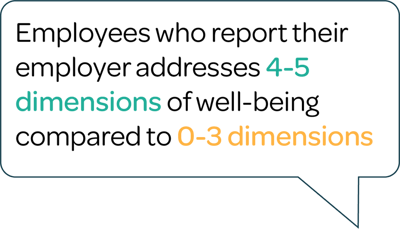
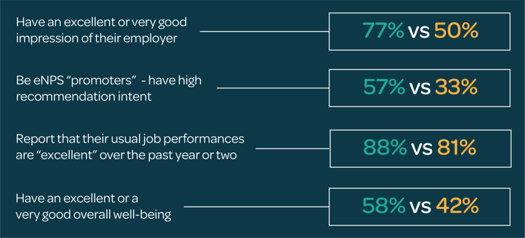
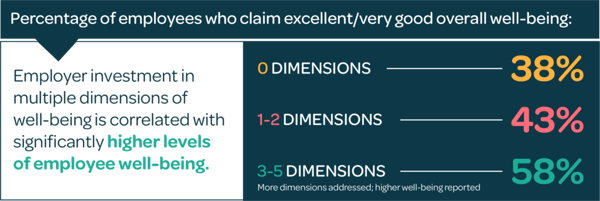 Source: Optum
Source: OptumAppreciation
A 2019 study by Work Human shows workers are looking for meaningful work at organizations where they feel recognized and appreciated. It’s more important to them than pay, free food, or fun team activities. Recent and frequent recognition is associated with higher gratitude levels and lower stress levels.


When employees are not finding what they crave, here is what happens…
Many employees are present at work… but not accounted for. As Joe Queenan, journalist and commentator, notes “presenteeism is a situation that arises when distracted employees drag their forlorn carcasses into the office and waste everyone else’s time by hacking their way through their working day on an empty tank.”
In other words, employees are there physically, but they’re not there mentally. The impact of your business is costly, very costly.


The Cost of Absenteeism and Presenteeism
Per employee per year, it accounts for *4 days lost of absenteeism and *57.5 days of presenteeism, with a combined cost well into the billions.
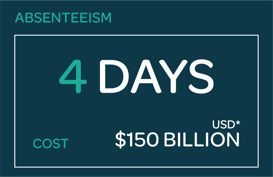
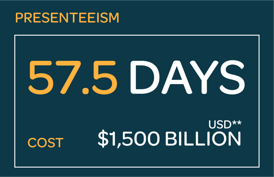
There is only so much People Leaders can control. One thing is for sure: by investing in solutions that support employees’ whole selves and their aspirations for growth and fulfillment, companies are not only investing in their employees, but they are also investing in their own future.
Bonus Video: Meet Scott, one of our most-requested Guides.
By Stephan Vincent, Sr. Director of Workplace Experience, LifeGuides
Building amazing company cultures centered around purpose, people-first mindset, human experience, and ❤️ for one another to optimize team performance
Let's Connect on LinkedIn!



